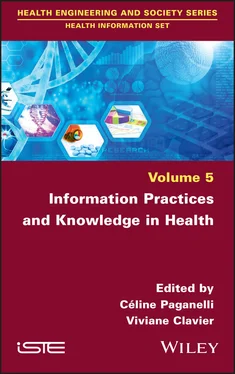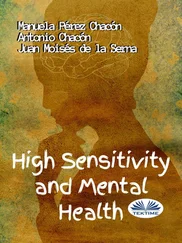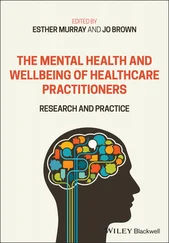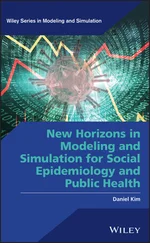[BUT 17] BUTLER D., “Gates foundation announces open-access publishing venture”, Nature , vol. 543, no. 7647, p. 599, 2017.
[CAM 18] CAMACHO M., RECKLEY, L.K., “Predatory journals: Enough is enough”, Laryngoscope , vol. 128, no. 7, p. 1510, available at: https://doi.org/10.1002/lary.27178, 2018.
[CIT 13] CITTON Y., “Économie de l’attention et nouvelles exploitations numériques”, Multitudes , vol. 3, no. 3, pp. 163–175, 2013.
[COB 18] COBEY K.D., LALU M.M., SKIDMORE B. et al ., “What is a predatory journal? A scoping review”, F1000Research , available at: https://doi.org/10.12688/f1000research.15256.2, 2018.
[COL 20] COLAVIZZA G., COSTAS R., TRAAG V.A. et al ., “A scientometric overview of CORD-19”, bioRxiv , available at: https://doi.org/10.1101/2020.04.20.046144, 2020.
[DIL 18] DILLAERTS H., “Paysage de l’Open Access: Complexité et hybridation des modèles de publication et de communication scientifique”, URFIST de Rennes , available at: https://drive.google.com/file/d/13_T-bvDwO-UiH86o7lqHJtAcDaStEv2K/view, 2018.
[ELS 18] ELSE H., “Radical open-access plan could spell end to journal subscriptions”, Nature , available at: https://doi.org/10.1038/d41586-018-06178-7, 4 September 2018.
[ELS 19] ELSE H., “How to bring preprints to the charged field of medicine”, Nature , available at: https://doi.org/10.1038/d41586-019-01806-2, 6 June 2019.
[FIN 12] FINCH J., Accessibility, sustainability, excellence: How to expand access to research publications, Report, Working Group on Expanding Access to Published Research Findings, RIN, 2012.
[FRY 11] FRY J., PROBETS S., CREASER C. et al ., PEER behavioural research: Authors and users vis-à-vis journals and repositories. Final report, available at: http://www.peerproject.eu/fileadmin/media/reports/Final_revision_-_behavioural_baseline_report_-_20_01_10.pdf, 2011.
[FU 19] FU D.U., HUGHEY J.J., “Releasing a preprint is associated with more attention and citations for the peer-reviewed article”, eLife , available at: https://doi.org/10.7554/eLife.52646, 2019.
[GIN 97] GINSPARG P., “Winners and losers in the global research village”, The Serials Librarian , vol. 1997, nos 3–4, pp. 83–95, 1997.
[GIN 18] GINGRAS Y., “Les transformations de la production du savoir: De l’unité de connaissance à l’unité comptable”, Zilsel , vol. 2, no. 2, pp. 139–152, available at: https://doi.org/10.3917/zil.004.0139, 2018.
[GRU 19] GRUDNIEWICZ A., MOHER D., COBEY K.D. et al ., “Predatory journals: No definition, no defence”, Nature , vol. 576, pp. 210–212, 2019.
[HOP 19] HOPF H., KRIEF A., MEHTA G. et al ., “Fake science and the knowledge crisis: Ignorance can be fatal”, Royal Society Open Science , vol. 6, no. 5, available at: https://doi.org/10.1098/rsos.190161, 2019.
[HOR 20] HORBACH S., “Pandemic publishing: Medical journals drastically speed up their publication process for Covid-19”, bioRxiv , available at: https://doi.org/10.1101/2020.04.18.045963, 2020.
[JOH 18] JOHNSON R., WATKINSON A., MABE M., The STM Report. An Overview of Scientific and Scholarly Publishing: 1968–2018 , International Association of Scientific, Technical and Medical Publishers, The Hague, 2018.
[KIR 20] KIRKHAM J.J., PENFOLD N., MURPHY F. et al ., “A systematic examination of preprint platforms for use in the medical and biomedical sciences setting”, bioRxiv , available at: https://doi.org/10.1101/2020.04.27.063578, 2020.
[KOU 20] KOUSHA K., THELWALL M., “COVID-19 publications: Database coverage, citations, readers, tweets, news, Facebook walls, Reddit posts”, Arxiv (pre-print), available at: https://arxiv.org/ftp/arxiv/papers/2004/2004.10400.pdf, 2020.
[LAR 18] LARIVIÈRE V., SUGIMOTO C.R., “Do authors comply when funders enforce open access to research?”, Nature , available at: https://doi.org/10.1038/d41586-018-07101-w, 24 October 2018.
[MIR 18] MIROWSKI P., “The future(s) of open science”, Social Studies of Science , vol. 48, no. 2, pp. 171–203, available at: https://doi.org/10.1177/0306312718772086, 2018.
[MOM 03] MOMEN M., “Equitable access to scientific and technical information for health”, Bulletin of the World Health Organization , vol. 81, no. 10, p. 700, available at: https://www.ncbi.nlm.nih.gov/pmc/articles/PMC2572335/, 2003.
[MOO 15] MOORHEAD L.L., HOZMEYER C., MAGGIO L.A. et al ., “In an age of open access to research policies: Physician and public health NGO staff research use and policy awareness”, PLOS ONE , vol. 10, no. 7, available at: https://doi.org/10.1371/journal.pone.0129708, 2015.
[NIC 19] NICHOLAS D., WATKINSON A., BOUKACEM-ZEGHMOURI C. et al ., “So, are early career researchers the harbingers of change?”, Learned Publishing , vol. 32, no. 3, pp. 237–247, available at: https://doi.org/10.1002/leap.1232, 2019.
[OLS 20] OLSSON L., LINDELÖW C.H., ÖSTERLUND L. et al ., “Cancelling with the world’s largest scholarly publisher: Lessons from the Swedish experience of having no access to Elsevier”, Insights , 33, available at: http://doi.org/10.1629/uksg.507, 2020.
[PEN 20] PENFOLD N.C., POLKA J.K., “Technical and social issues influencing the adoption of preprints in the life sciences”, PLOS Genetics , vol. 16, no. 4, p. e1008565, available at: https://doi.org/10.1371/journal.pgen.1008565, 2020.
[PIW 18] PIWOWAR H., PRIEM J., LARIVIÈRE V. et al ., “The state of OA: A large-scale analysis of the prevalence and impact of Open Access”, Peer J , vol. 6, p. e4375, available at: https://doi.org/10.7717/peerj.4375, 2018.
[RIF 05] RIFKIN J., L’Age de l’accès, la nouvelle culture du capitalisme , La Découverte, Paris, 2005.
[ROS 18] ROSS-HELLAUER T., SCHMIDT B., KRAMER B., “Are funder open access platforms a good idea?”, SAGE Open , pp. 1–16, available at: https://doi.org/10.1177/2158244018816717, 2018.
[SEV 19] SEVER R., ROEDER T., HINDLE S. et al ., “BioRxiv: The preprint server for biology”, bioRxiv , available at: https://doi.org/10.1101/833400, 2019.
[SIL 20] SILER K., “Demarcating spectrums of predatory publishing: Economic and institutional sources of academic legitimacy”, SocArXiv , available at: https://doi.org/10.31235/OSF.IO/6R274, 2020.
[SUB 08] SUBER P., “An open access mandate for the national institutes of health”, Open medicine: A Peer-Reviewed, Independent, Open-Access Journal , vol. 2, no. 2, pp. 14–16, available at: https://www.ncbi.nlm.nih.gov/pmc/articles/PMC3090178/, 2008.
[TEN 16] TENNANT P.T., WALDNER F., JACQUES D.C. et al ., “The academic, economic and societal impacts of Open Access: An evidence-based review”, F1000Research , vol. 5, p. 632, available at: https://doi.org/10.12688/f1000research.8460.3, 2016.
[TEN 18] TENNANT J., BAUIN S., JAMES S. et al ., “The evolving preprint landscape: Introductory report for the knowledge exchange working group on preprints”, MetaArXiv , available at: 10.31222/osf.io/796tu, 2018.
[WAL 06] WALPORT M., KILEY R., “Open access, UK PubMed central and the wellcome trust”, Journal of The Royal Society of Medecine , vol. 99, pp. 438–439, 2006.
[WIL 94] WILLIS K., ALEXANDER K., GOSLING W. et al ., “TULIP – The University Licensing Program: Experiences at the University of Michigan”, Serials Review , vol. 20, no. 3, pp. 39–47, 1994.
[ZER 04] ZERHOUNI E.A., “NIH public access policy”, Science , vol. 306, no. 5703, p. 1895, 2004.
Читать дальше












